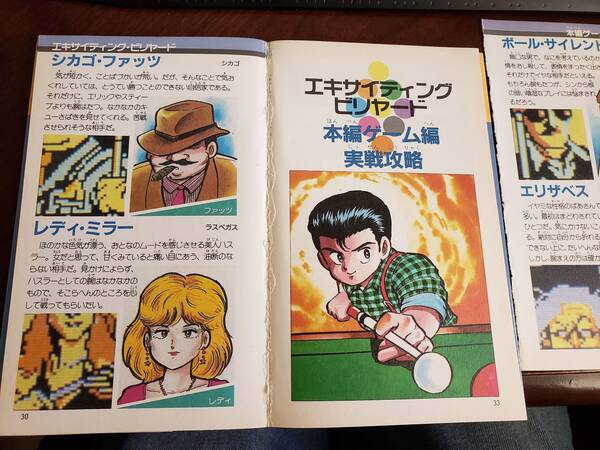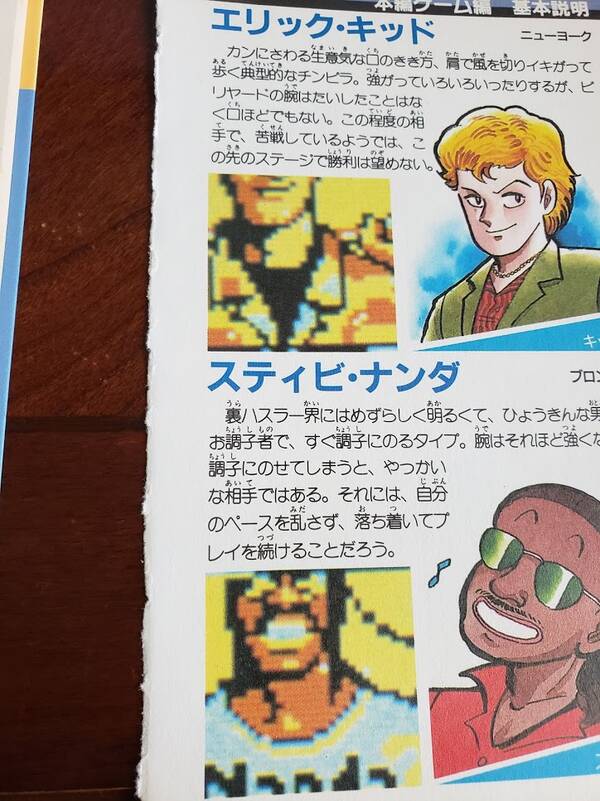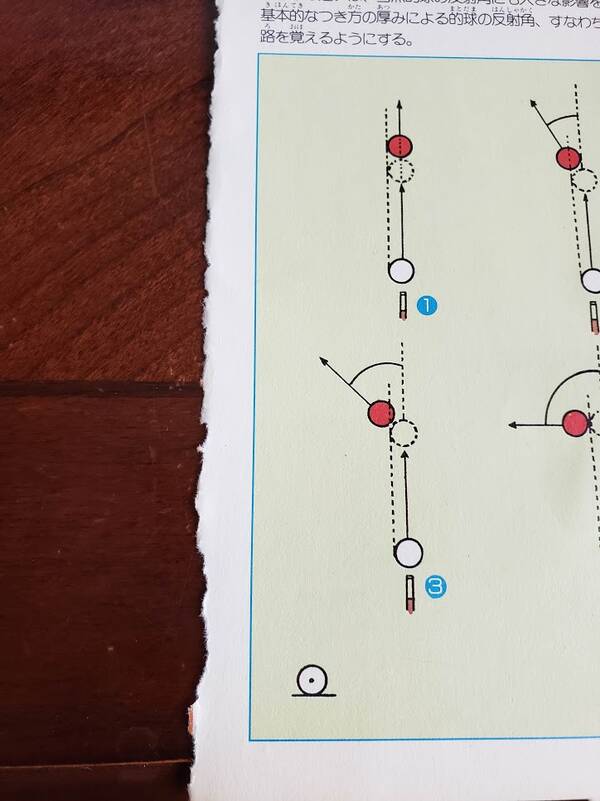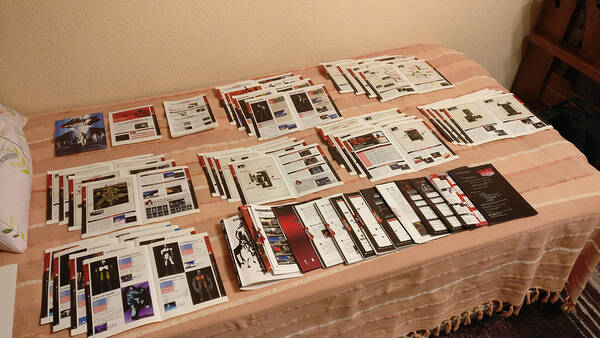Unbinding Books and Manuals
Bound books and manuals can be difficult to scan properly, and if they're not stapled they'll need to be unbound in a destructive manner. This is unfortunately the only way to get a good archival scan of these, unless you invest in something like the DYI Book Scanner. It’s understandable if you don’t want to do this, but if you’re willing to sacrifice your bound matieral for the greater good of preservation you’ll need to get the pages unbound.
Heat guns and hair dryers are useful to loosen the binding adhesive and pull the pages apart. That being said both are tricky and it’s best to practice on some more common or less valuable manuals/books to get the hang of it as it’s easy to rip, burn, and damage pages if you're not careful. If all this talk really makes you nervous or you just flat out don't want to mess with it there's the option of contacting us in the Discord and mail your manual to someone who has experience unbinding and have them do it.
Using a Heat Gun/Hair Dryer
Before using this method PLEASE test it out on something common or something you don't care about. You'll honestly need to get the feel for the tools and the unbinding process in general and it can take some practice.
Both heat guns and hair dryers work pretty well in most cases - with some books you can almost snap the binding in half and then heat it up and quickly pull the pages away one by one without much trouble. Others are tightly bound with super strong adhesive and even with heat you’re going to have to be very patient and careful, and the initial pages will probably be the toughest pulling out without damage (see the example below).
It’s very much an experience thing and something you just get a feel for the more you practice. When using a heat gun, don't overdo it! Some have multiple heat settings and the hottest will easily char pages and turn the glue into a soupy mess that gets everywhere and makes it impossible to scan. You’re almost guaranteed to never get that glue off without damaging your scans and you could even mess your scanner up trying to.
So be careful and patient. Again it’s just something you have to learn to judge as every type of binding is different. Basically, while pulling the pages, if you feel tension make sure to stop and heat that area again for a few seconds, then try again and repeat until the page pulls away cleanly.
Here's a video by kitsunebi of Retromags.com showing their method:
You open the book up and lay something heavy on one side of it to hold the page down firmly. Then you take the heat gun/dryer along the spine heating it up for awhile and then try to remove a page and see how it goes. If it comes off without much work that's probably the amount of heat you'll need to use for the remaining pages. If it comes off super easily but you have glue dripping or hanging from it you've gotten it too hot and will need to avoid now getting that on any pages and I honestly just recommend cutting the paper that has the glue on it off or else you could risk jamming or damaging your ADF. Let the book sit for a bit then try again and don't hold the heat to the book for as long to avoid this. If you are getting resistance and pages aren't coming off easily you need to heat it up more. In the video above, kitsunebi heats every page and for some books that may be necessary, but we would recommend avoid doing that because it's going to run the risk of melting the glue and making a mess. The method we recommend is to just heat pages for awhile, turn off the heat gun and if the pages are removed easily keep taking them out until you hit resistance again, and then repeat the heating process. Again, you just have to develop a feel for this process, practice, and be patient. Err on the side of going too slow and don't force it.
Unbinding Strictly by Hand
Believe it or not some books will unbind without you having to use a heat gun or hair dryer, but it's not common. We've noticed this being the case in many older Japanese books and strategy guides. That being said the heat gun/hair dryer method can still be used on these if you're used to it and can make things easier. An easy way to tell is turn to the middle of the book and bend the spine of the book backwards and you'll usually hear a pop or a crack and see the pages being to split from the binding. If this doesn't happen you're going to have a more stubborn book and will need to remove the pages by the heat gun/hair dryer method. Now try to pull one of the pages out from the middle of the book and see if it comes out easily without tearing and if it does continue to do so for the remaining pages. Go slow and take your time and don't force anything, patience is the biggest key with de-binding. If you start to run into resistance or notice the pages are wanting to tear you'll need to move on to the heat gun/hair dryer method. Picture below is an example of a book I was able to use the technique above with and easily being removing pages.
Picture of book being split down the middle and a page to the right that was successfully remove by hand.
Picture of a cleanly de-binded page, notice how along the edges there's not real rips or tears and it's pretty uniform.
…however a few pages later i started meeting lots of resistance and the page isn't tearing as cleanly. It's time to switch to the heat gun/hair dryer method which we'll go over in the next section.
Notes on Unbinding
Lastly when removing pages, especially with the purely by hand method, you may may run into the binding sticking on as little chunks along the edges of your paper. You'll want to try and remove these if at all possible before scanning as they'll run the risk of scratching your ADF glass, or leaving residue on your glass you'll have to clean up. Usually fanning the pages once you've de-binded them can get rid of a lot of this. But we recommend inspecting every page and remove any chunks if you notice them because they can cause headaches later.
Stapled pages
Stapled pages are much easier to deal with, but we generally don’t recommend staple pullers as they seem to damage pages when pulling. Using your fingernails (if possible) and carefully pull the staples up to where they’re pointing straight up usually does the trick. A butter knife or tweezer can also be used to get these started, but you need to be careful not to damage the manual underneath.
Once the staples are poking straight up, pull them out and slightly wiggle the staples as you pull them to make the holes a little bit larger for easier re-insertion later. After scanning you can try to put the staples back in, and it may help to put them back in with the same orientation as you pulled, as they seem to go back into the manual easier that way. You can then also replace old staples that might have rusted with new ones!
This can be maddening and very tricky on some larger manuals, so just try your best. In the end if its your manual and you don’t care about it having staples or not, you can even just leave them out.
Community Examples of how to unbind a book for scanning
From community member Bigmanjapan
It all depends on how the pages, especially the outer cover, are made. Some outer covers have something like lamination that is applied to them, so heating them up could damage the surface. If you’re unsure, scan the front and the back of the guide before unbinding it. Very recently we unbound two Killer7 PS2 guides, using a simple 1700W hairdryer. Guides like these are made with the multiple 8-pages “notebooks” pressed together. To start, you unbind one side of the outer cover, then you unbind the pages in groups of 8. If you try to pull individual pages one by one, you will most likely rip them off, sometimes ruining the pages in the process. If you are careful enough, you can unbind the book without any damage. When you unbind the 8-pages segments, detach the individual spreads and leave them to cool off. The glue will harden and it will be much easier to clean it off. If you try to clean the glue while it’s still heated, it will simply smudge and leave uncleanable stains.
In the picture below you can see that the first few pages are completely torn off, but the rest were unbound using the 8-pages segments method which left them unharmed.



